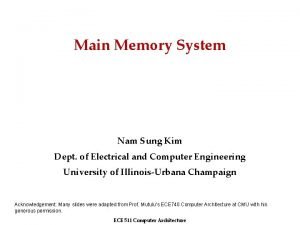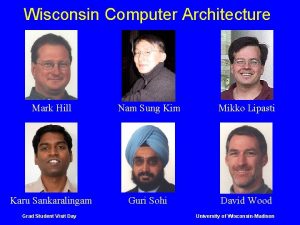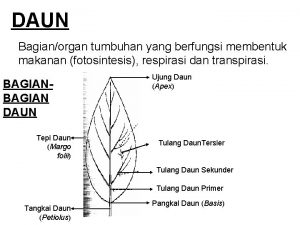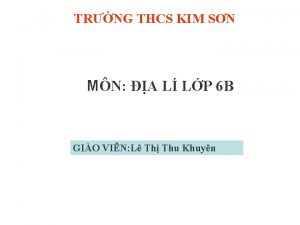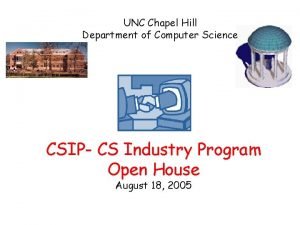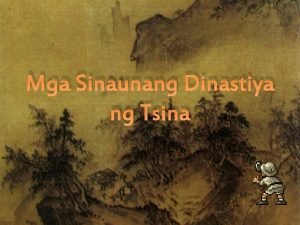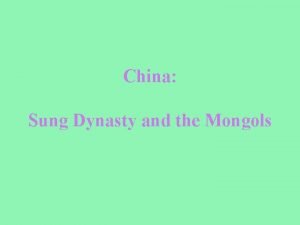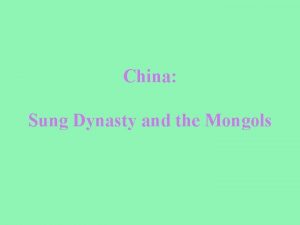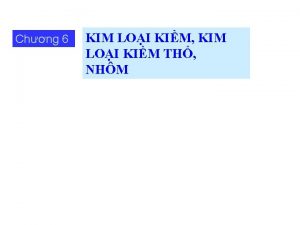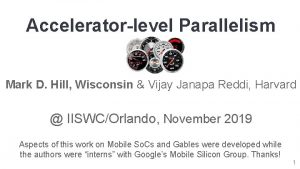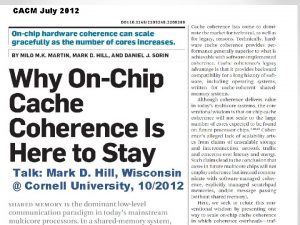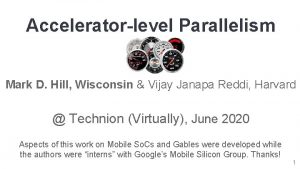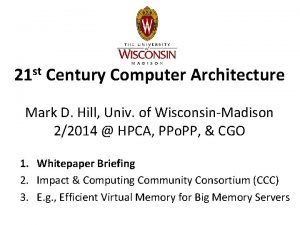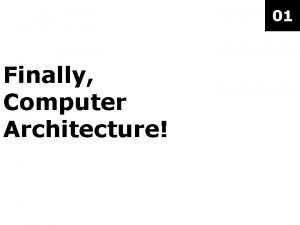Wisconsin Computer Architecture Mark Hill Nam Sung Kim














- Slides: 14

Wisconsin Computer Architecture Mark Hill Nam Sung Kim Mikko Lipasti Karu Sankaralingam Guri Sohi David Wood 1

Microprocessor Evolution 1971 (4004) 2002 (P 4) Uniprocessor Several techniques invented @ UW Sohi, Smith, Goodman, Hill, Wood 34% annual growth no additional $ or Joules 2

Microprocessor Evolution 1971 (4004) 2002 (P 4) 2005 Uniprocessor Multicore 34% annual growth no additional $ or Joules Ongoing transition 2020 3

Microprocessor Evolution 1971 (4004) 2002 (P 4) Uniprocessor 2005 Multicore 2020 ? 34% annual growth no additional $ or Joules 4

Future § Moore’s law to continue § Doubling of devices § But…devices consume same power as previous generation 5

Future But… 2 X Power… 4 X Power! 6

Dark Silicon Cannot power on all devices 7

8

Future Architectures § Easy ways to program multicore chips § Improving energy efficiency of processing § Improving communication and synchronization 9

Why Computer Architecture at Wisconsin? 1 of 2 § Strong History § processors: branch prediction, decoupled architectures, precise interrupts, out-of-order processors, pipeline clocking, speculative execution, speculative multithreading § memory: snooping coherence, 3 Cs model, memory consistency, non-blocking caches, token coherence § simulation: simplescalar, pharmsim, & GEMS § Strong Present § speculative multithreading, speculative coherence, chip multiprocessors, virtual machines, transactional memory § awards: Eckert-Mauchly, Wilkes, IEEE/ACM Fellows, National academy of engineering members § 20 grad students & several well-funded projects 10

Why Computer Architecture at Wisconsin? 2 of 2 § Former Graduate Students Prospering § Over a dozen in academia: CMU, Duke, Illinois, Maryland, Michigan, NCSU, U Penn, Purdue, Texas, Toronto § Nearly all winners of NSF CAREER awards, 4 winners of Sloan Research Fellowships, 4 winners of Maurice Wilkes award § Several in key industrial positions: AMD, Cray, IBM, Intel, Sun § Includes principal architects of important products (Intel Knights. Fairy, Alpha 21264, Cray T 3 EX 1/) § Strong Future § We average 15 -20% ISCA papers since 2000, our grads average another 15 -20% § We want to add you to this slide! 11

Selected Projects 1 of 2 § Multifacet: Multicore design (Hill & Wood) § Recent: Log-based Transactional Memory § Future: Deterministic Execution & Replay § Vertical: Technology-driven architecture (Sankaralingam) § Idempotent Processing § Dy. SER: Energy efficiency through extreme specialization § Multiscalar: Processor Design (Sohi) § Past: Speculative multithreading and variants § Recent/Current: Non-traditional multicore architectures and solving the multicore programming problem. 12

Selected Projects 2 of 2 § Many-Core Power and Performance(Kim) § Power, performance optimization considering process variability § Reliable, low-power computing § Pharm: System and processor design (Lipasti) § Optimized software & hardware for commercial servers § Novel and power-efficient cache coherence and interconnects § High ILP processors with low power and low complexity 13

http: //www. cs. wisc. edu/~arch/uwarch 14
 Dynamic ram refresh rate
Dynamic ram refresh rate Mark hill wisconsin
Mark hill wisconsin Ngồi chờ sung rụng
Ngồi chờ sung rụng Do nebesa nek se ori tekst
Do nebesa nek se ori tekst Contoh daun majemuk dan daun tunggal
Contoh daun majemuk dan daun tunggal Bản đồ các đới khí hậu trên trái đất
Bản đồ các đới khí hậu trên trái đất Lịch sử hà nội từ năm 1802 đến năm 1884
Lịch sử hà nội từ năm 1802 đến năm 1884 Sung-mi kim
Sung-mi kim Nam ho kim
Nam ho kim Bus design in computer architecture
Bus design in computer architecture Computer architecture and organization difference
Computer architecture and organization difference Basic computer organisation and design
Basic computer organisation and design Change d
Change d Unc chapel hill cs
Unc chapel hill cs Mga dinastiya ng sinaunang tsina
Mga dinastiya ng sinaunang tsina
